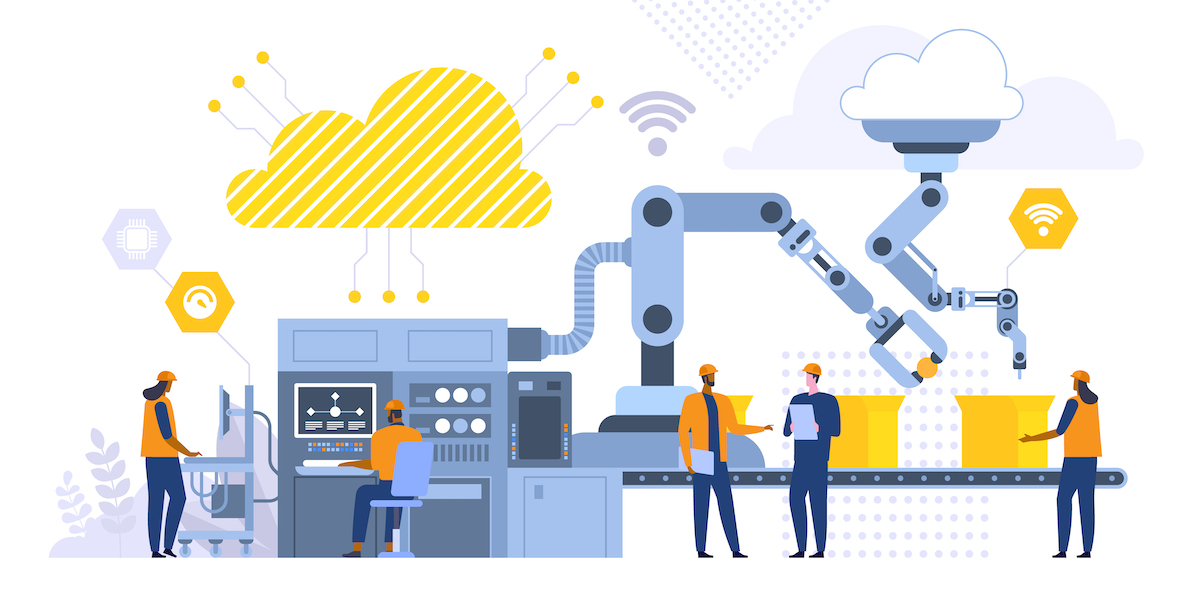Embracing an intelligent edge layer in Industry 4.0
Industrial revolutions spurred on the introduction of advanced technology like electricity in the second revolution and computers in the third. But the Fourth Industrial Revolution now relies more on what happens behind the scenes — big data. Edge analytics has become a significant solution for managing data, but Industry 4.0 is demanding technology that’s a level up. Here, Martin Thunman, CEO and co-founder of edge analytics experts Crosser, explains why an intelligent edge layer is crucial for Industry 4.0.
Many enterprises have too many complex applications that don’t follow a common architecture. The promises of the Industry 4.0 are significant — improved productivity, greater efficiency and better flexibility, resulting in increased profitability. To achieve this, manufacturers must focus on an IIoT architecture that is flexible and future-proof. However, the communication layer of yesterday has evolved and has become even more intelligent. If manufacturers don’t embrace it, they risk getting stuck in the past.
What is IIoT Intelligent Edge Layer?
An intelligent edge layer refers to a smart integration solution that enables businesses to build real-time integrations between systems, from machines on the factory floor, to enterprise systems that are used to operate an organization. In this instance, intelligent actually means simple — because the technology is so technically advanced, it simplifies business operations.
Defining an intelligent edge layer
Intelligent is not just about transferring data between two systems, but it’s also about adding advanced logic to the integrations. The edge is where the integrations are run — on-premise, close to the systems you want to integrate. This enables integrations between systems that are only accessible locally, preventing data from being exposed outside of security boundaries, or when it’s possible to reduce the data volume and only send relevant information over networks.
Lastly, the layer implies where it sits between existing systems, integrating both horizontally and vertically across an existing infrastructure.
Unlocking the value of IIoT intelligence layers
Layers aren’t uncommon in IoT applications. The enterprise service bus (ESB) is regarded as the most promising strategy for integrating business applications across distributed and diverse frameworks and platforms today. However, Industry 4.0 sets new expectations for traditional service bus architecture, meaning the service bus now needs more functionality than ever before. This has created the demand for an intelligent layer that not only moves messages between endpoints, but can run real-time applications and workflows with full data analytics capabilities included.
Great value can come from use cases where insights are derived from data by applying logic. This can vary from condition logic all the way to applying advanced algorithms and machine learning (ML) models. With logic as part of their integrations, a manufacturer can trigger actions instead of just sending data, or they can enhance the value of the data by extracting features already next to the source.
Applying intelligent edge layer to Industry 4.0
Integrating an intelligent edge layer into existing architecture presents many advantages. These include unlimited flexibility to add new use cases at any time, enabling the integration of OT and IT teams to work together, and a future proofed architecture that’s scalable, cost efficient and has a longer life cycle.
Flexibility remains a key driver of integrating an intelligent edge layer because it enables a variety of use cases that are key for Industry 4.0 applications. This involves machine-to-machine communication for optimization and anomaly detection, advanced analytics that triggers actions based on analysis of your real-time data, as well as on-premise to cloud integrations. Lastly, it also helps leverage new data types like images and audio to optimize processes and build new intelligent workflows.
When we acknowledge challenges that enterprises face, an intelligent edge layer offers opportunities to overcome many of them. For instance, maintenance is one of the costliest and most time-consuming acts an enterprise can face. But predictive maintenance, regarded one of the top future trends in manufacturing by Forbes, can reduce breakdowns by 70 per cent. Here, an intelligent edge layer that sits between machines to collect, integrate and analyze real-time data on a machine’s status, which triggers automatic changes to production and provides manufacturers with important data to make informed decisions.
It can also help manufacturers to reach sustainability goals — a priority for all businesses. Besides the direct emissions that facilities produce, data storage is also energy intensive. According to the International Energy Agency (IEA), data centers consumed between 200 and 250 terawatt hours (TWh) of electricity in 2020 — one per cent of total global demand.
Conclusions about intelligent edge layer in IIoT
Processing data at the edge is one way to reduce reliance of data centers and lower emissions. But advanced logic such as that simplifies data harmonization from multiple sources, or can create human readable notifications to trigger an action based on results, decision makers can generate workflows that provide greater insights into environmental key performance indicators (KPIs).
A flexible, intelligent edge layer can be gradually implemented to complement existing infrastructure and architecture. With advanced logic already in place, an intelligent edge layer enables the simple construction of smart integrations without having to build logic into endpoint systems. With this ability, businesses have an architecture that provides functionality and greater insights across all layers of facility.



